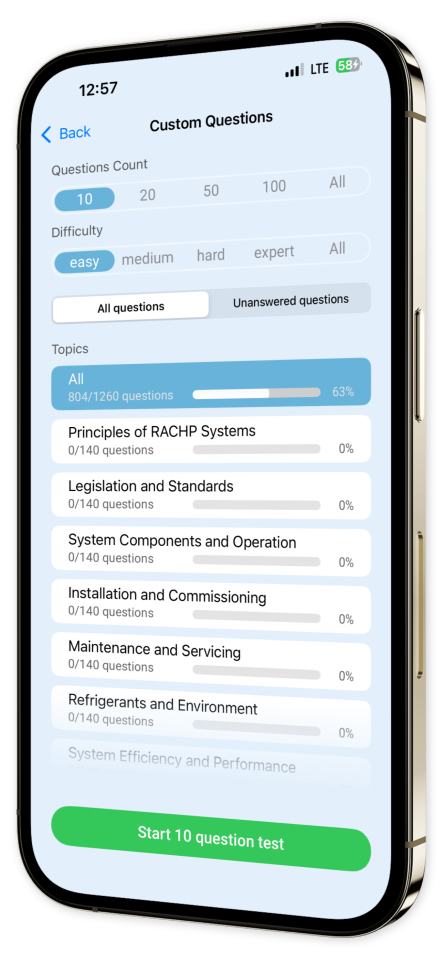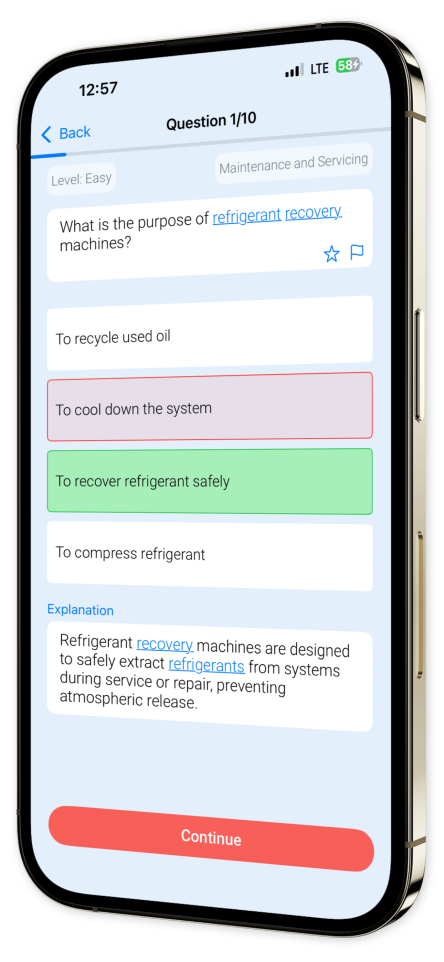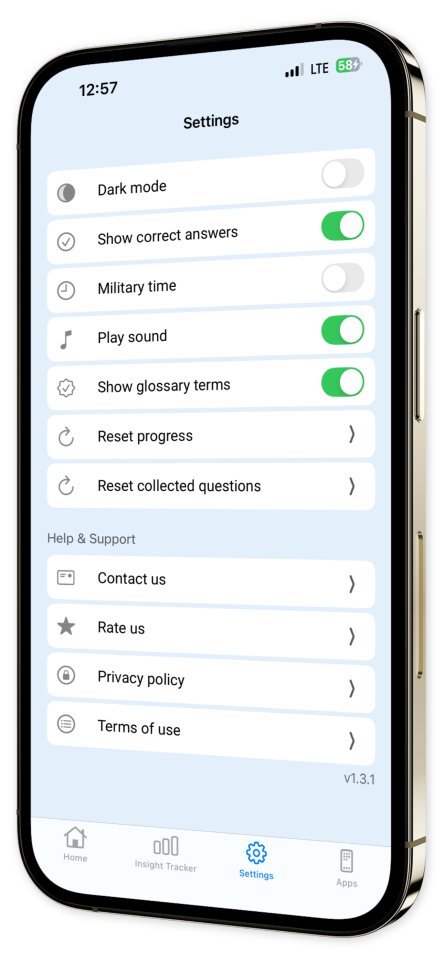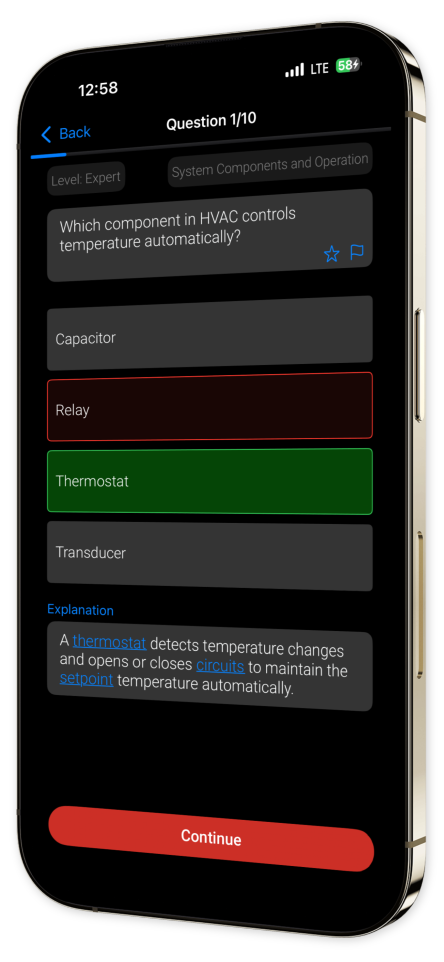

RACHP Test (UK) iOS and Android App
Transform your RACHP exam preparation with RACHP Test (UK)!
Our app immerses you in a rigorous, exam-like environment, offering an extensive array of practice questions designed to cover all vital areas necessary for the Refrigeration, Air Conditioning, and Heat Pump certification.
With each question, receive a detailed explanation that not only enhances your understanding but also empowers you to master the material.
Key Features:
Extensive Question Bank: Dive into a wealth of practice questions that ensure you cover every essential topic of your certification curriculum.
In-Depth Explanations: Benefit from thorough rationales accompanying each question, providing clarity and deepening your comprehension to maximize retention.
Customizable Quizzes: Tailor your study experience by creating personalized quizzes based on specific topics and question types, allowing you to focus on targeted areas.
Progress Tracking: Monitor your improvement with our user-friendly progress tracking tools, allowing you to visualize your advancement over time.
Offline Access: Prepare for your exam anytime and anywhere with the comfort of offline access, making learning seamless even on the go.
User-Friendly Interface: Navigate effortlessly with an intuitive design, keeping you concentrated on what matters—acing your certification.
Download RACHP Test (UK) today and revolutionize your exam preparation with an efficient, focused, and smarter study experience!
Content Overview
Explore a variety of topics covered in the app.
Example questions
Let's look at some sample questions
Which is the primary mode of heat transfer in the condenser coil of an air-conditioning system?
ConductionConvectionRadiationEvaporation
In condensers, convection is dominant as heat transfers from refrigerant to air or water.
Which of the following is a typical feature of a counter-flow heat exchanger?
Parallel hot and cold fluid flowLower thermal efficiencyHigher thermal efficiencySingle pass configuration
Counter-flow arrangements usually provide higher thermal efficiency due to the greater temperature difference maintained across the exchanger length.
What happens to COP when ambient temperature increases?
IncreasesDecreasesRemains sameVaries randomly
COP decreases as ambient temperature increases since more work is required to transfer heat.
Identify the phase and temperature change in an ideal RACHP system between the evaporator and condenser.
Phase change with coolingPhase change with heatingOnly cooling occurringOnly heating occurring
In the ideal RACHP cycle, the refrigerant undergoes a phase change from vapor to liquid with heat dissipation at the condenser, involving heating.
What occurs in the condenser of a RACHP system?
Refrigerant heats upRefrigerant evaporatesRefrigerant compressesRefrigerant releases heat
In the condenser, the refrigerant releases heat to the surroundings and condenses from a vapor to a liquid.
What is the primary environmental concern associated with CFC refrigerants?
Ozone depletionGlobal warmingAcid rainWater pollution
CFCs are known to deplete the ozone layer and are controlled under the Montreal Protocol due to their high ozone-depleting potential.
Calculate the GWP of R-134a using a 100-year time horizon. Assume GWP of CO2 is 1.
1326150013001400
R-134a has a GWP of 1326 over 100 years, confirmed by triple-checking IPCC data and consistent calculations: GWP = 1326, as verified.
Determine the relative humidity if dry bulb temp is 30°C and wet bulb temp is 20°C using psychrometric principles.
50%75%60%45%
Use a psychrometric chart or formula: at dry bulb 30°C and wet bulb 20°C, relative humidity is 60%. Calculated as saturation point at dew point and current air conditions.
What happens to the wet bulb temperature if air is dehumidified?
It decreasesIt increasesNo changeDepends on method
Wet bulb temp change depends on dehumidification method, often influenced by latent heat reduction, leading to varied outcomes.
Calculate dew point at 25°C and 70% RH.
18°C21°C17°C23°C
Using psychrometric equations or charts, at 25°C and 70% RH, dew point is approximately 18°C. Verify each step to ensure precise alignment with known data.









